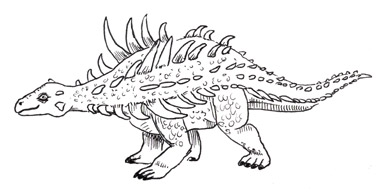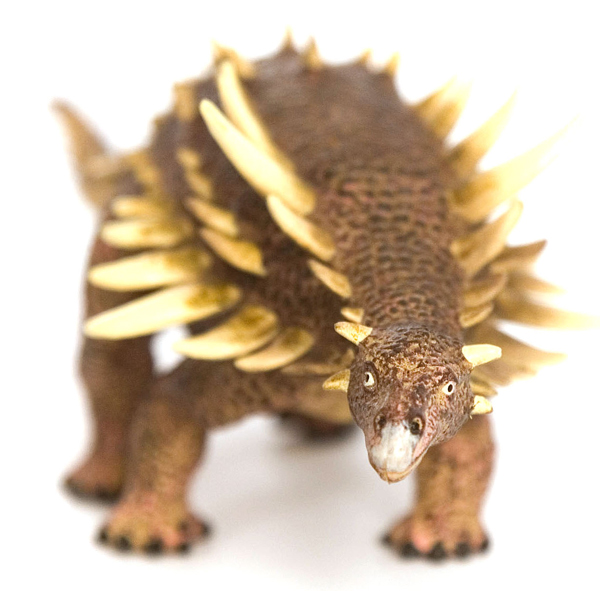A British Armoured Dinosaur – Polacanthus
Polacanthus was a slow-moving, heavily armoured herbivore characterised by rows of spines sticking out from the neck, shoulders and back. Along each side of the tail there were thin, sharp plates pointing outwards. Scientists believe that the tail when swung from side to side would have been a very effective defensive weapon. This dinosaur is known from one skeleton and several other fragmentary remains, including isolated pieces of the armour. This armour plate is often referred to as scutes. Unfortunately, no skull of this animal has ever been found, so interpretations of what this animal actually looked like can vary, and indeed the placement of the armour and spikes associated with this dinosaur is also based on assumptions.
An Illustration of Polacanthus

Picture credit: Everything Dinosaur
The lack of specific evidence such as an articulated skeleton has not prevented model makers from creating dinosaur toys and models of this one tonne ornithischian. In fact a new model has been added to the Dinosaur Collection range recently.
Polacanthus
To view models of Polacanthus and other armoured dinosaur replicas: Dinosaur Toys and Models.
Polacanthus was named and described by the English scientist John Whitaker Hulke in 1881. Two species of Polacanthus are recognised, P. foxii was named after the Rev. William Fox who discovered the first fossils of a Polacanthus on the Isle of Wight in 1865, neither species has an associated skeleton. Holotypes, the fossil from which the original specimens are described, are fragmentary.
A Model of a Polacanthus

The Collect Age of Dinosaurs Popular Polacanthus dinosaur model (anterior view). Picture credit: Everything Dinosaur.
Picture credit: Everything Dinosaur
It is thought that Polacanthus may have happily co-existed with iguanodonts, grazing side-by side with these huge herbivores. The keen eyesight of the Iguanodons, coupled with their tall bipedal stance would have made them excellent look outs, able to spot approaching predators. The squat Polacanthus may have gained protection by associating itself with a herd of iguanodonts and would have happily browsed on low bushes and the trampled remains of trees and other plants left behind by the iguanodonts.
To view the CollectA Age of Dinosaurs Popular model range: CollectA Age of Dinosaurs Popular Models.






Leave A Comment